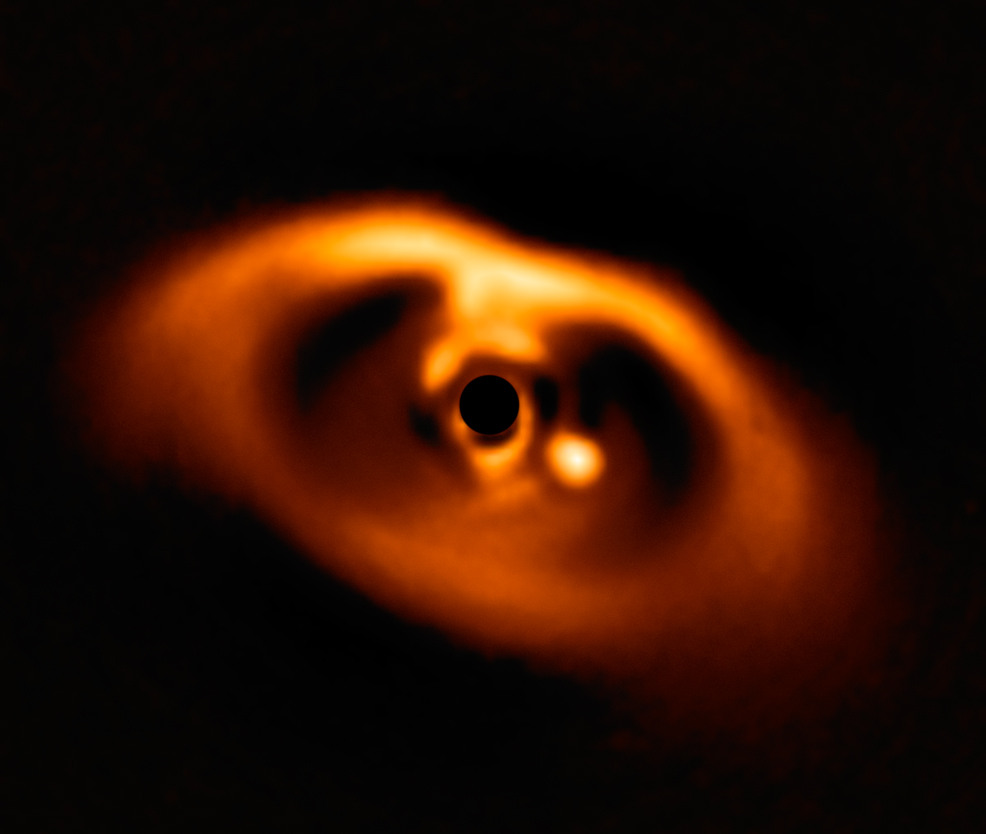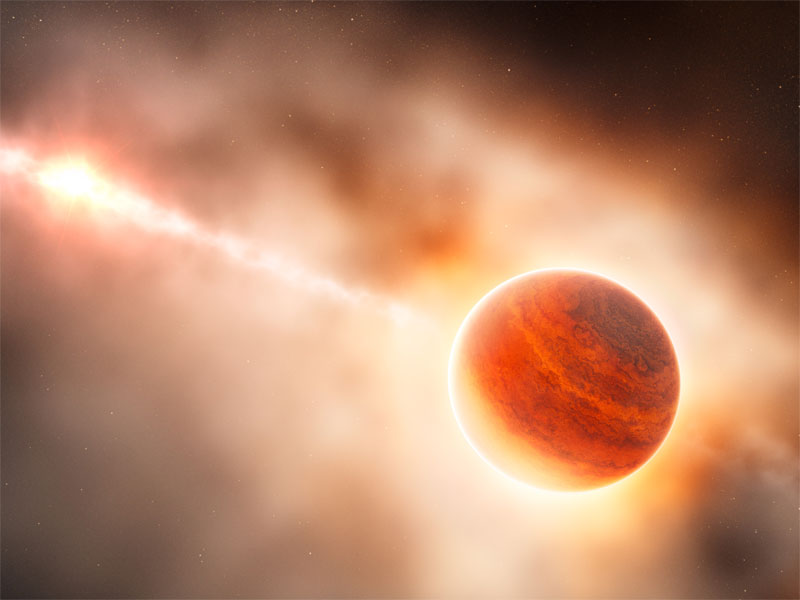
3rd July 2018 First confirmed image of a newborn planet Astronomers report the first ever confirmed image of a newborn planet, seen within a primordial soup of gas and dust around a young star.
The European Southern Observatory's (ESO) Very Large Telescope (VST) has captured the first confirmed image of a planet forming in the dusty disc surrounding a young star. The newborn planet can be seen carving a path through the primordial soup of gas and dust around PDS 70 – a T Tauri star around 370 light years from Earth. The system is less than 5.4 million years old, making it extremely young in astronomical terms. For comparison, our own Solar System is 846 times older at 4.57 billion years of age. An instrument called SPHERE was also used, allowing the telescope to measure the planet's brightness at different wavelengths, which enabled properties of its atmosphere to be deduced. Visible as a bright point, below and to the right of the blackened centre of the image, the planet is three billion kilometres from the central star, or about the equivalent distance between Uranus and our Sun. Analysis shows that PDS 70b is a gas giant, with a mass a few times that of Jupiter. The planet's surface has a temperature of around 1,000°C (1,830°F), much hotter than any planet in our own Solar System. The dark region at the centre of the image is due to a coronagraph – a "mask" that blocks the blinding light of the central star and allows astronomers to detect its much fainter disc and planetary companion. Without this mask, the faint light from the planet would be utterly overwhelmed by the brightness of PDS 70.
"These discs around young stars are the birthplaces of planets – but so far, only a handful of observations have detected hints of baby planets in them," explains Miriam Keppler, who led the team behind the discovery of PDS 70's still-forming planet. "The problem is that until now, most of these planet candidates could just have been features in the disc." "The special thing about this new planet is that we can directly image it, so the ones by Kepler, for example, were derived by indirect techniques," she says in a Guardian interview. "In this case, we now have a direct image of the planet in its 'birthplace' – the circumstellar disc. This is especially important because people have been wondering, for a long time, how these planets actually form and how the dust and the material in this disc forms a planet, and now we can directly observe this." A second team, involving many of the same astronomers as the first, has recently followed up the initial observations to investigate PDS 70's fledgling planetary companion in more detail. They not only made the spectacular image of the planet shown above, but were even able to obtain a spectrum indicating that its atmosphere is cloudy. Dr Zoe Leinhardt, a computational astrophysicist at the University of Bristol and who was not involved in the research, welcomed the discovery: "This is a relatively young star that shows all of the indications that there should be a planet there, and there is one. For astronomers, most of the time, it is very rare that we are really able to show a picture. We just have to make an interpretation. This is almost undeniable, so it is very exciting. It does suggest that our idea for the way planet formation works is correct." It is possible that other, smaller planets are hidden inside the disc – or that other planets could appear over time – according to Dr Leinhardt: "The way that planets form, a large Jupiter-mass planet would be the easiest to see... and also those large planets would form more quickly. What this does indicate is that planet formation is ongoing in that system."
Comments »
If you enjoyed this article, please consider sharing it:
|








